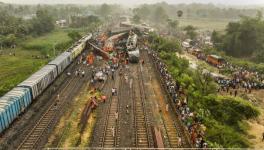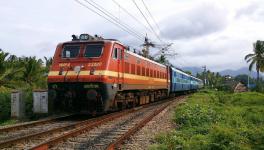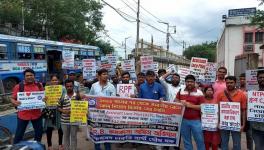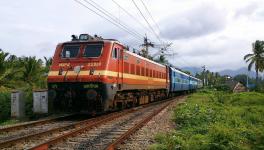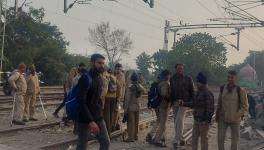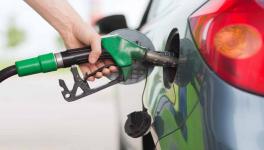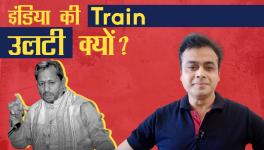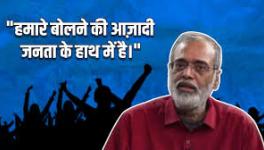Launched Amid Fanfare, High Power Electric Locos Lying Idle as Railways’ Fuel Bill Swells
Image for representational use only.Image Courtesy : The Hindu
New Delhi: Despite the rapid route electrification drive and thrust on replacing diesel locos with electric ones, the fuel expenditure of Indian Railways is on the rise, belying the much-touted claim of saving Rs 4,500 crore a year in its fuel bill.
The Railways spent Rs 20,555 crore in the fiscal 2018-19 in the fuel bill, against Rs 17,831 crore in 2017-18.
The national transporter incurred an expenditure of Rs 35.32 crore on diesel purchase during the April-May period of the current fiscal and, according to estimates, its fuel bill could touch Rs 21,195 crore by the end of the year if this trend prevails, say sources in the Railways.
However, though Railway’s fuel consumption has shown a bit of a reduction last year as compared to the previous year, this was not because of electric traction but fuel economy measures undertaken at various levels across the country, sources added.
The Railways consumed 30.69 lakh kilo litre diesel in 2018-19, as compared to 30.81 lakh kilo litre in 2017-18, a negligible reduction of 0.12 lakh kilo litre.
Notably, Indian Railways is on a spree of electrifying rail routes of about 6,000 km in a year. Several diesel locos are being replaced with electric locos while attempts have also been made to convert diesel locos to electric ones at railway workshops.
The national transporter recently announced the launching of a high-powered electric locomotive at Chittaranjan Locomotive Works (CLW) in Kolkata. The 9,000 HP loco was launched on March 31 at the CLW by the then Member-Traction, Ghanshyam Singh, to include it in the fiscal 2018-19. However, the loco has been lying idle at CLW since the last three months. According to insiders, the problem is deep as the motor provided in the 9000 HP loco does not match the control system.
Another 12,000 HP diesel locomotive was also converted at the Varanasi workshop during this year’s Kumbh mela with much fanfare. Besides, four other locos with varying horse power of 2,600 to 5,000 were also converted for electric traction.
Singh, who has retired since May 31, however, said "All these locos are awaiting CRS clearances and at various stages of trials."
Currently, the Railways has about 5,500 diesel locos and about 5,600 electric locos that are operational.
SN Agrawal, Railway Board Member-Staff, who holds additional charge of Traction after Singh's retirement, admitted the problem and said: "There are many stretches where power transmission was a problem. Though the route is being electrified, there are no sub-stations. So diesel locos have to run and as a result, the fuel bill has not decreased."
The Railways had claimed that they would save about Rs 4,500 crore a year in the fuel bill through pushing electric locos and by replacing diesel ones in the system.
Agrawal further said that unless there was end to end connectivity, the problem would persist.
Asked about the current status of the recently launched 9000 HP electric loco at CLW and many diesel locos converted into electric ones, he said "Some three to four diesel locos were converted into electric locos. But it is a long process. Trials and instrumentation by RDSO will begin now. Research Design and Standards Organisation (RDSO), is the Railways’ research wing and its approval is mandatory for any new product induction.
Railway Board Member-Rolling Stock, Rajesh Agarwal, said fuel management issues were raised on World Environment Day celebrations on June 5. Several issues concerning the environment were flagged and the rising fuel bill was one of these. “The fuel bill should have been reduced amid the massive electrification. However, it has risen," he said.
Meanwhile, the country’s first high-powered electric locomotive manufactured at Madhepura, which was flagged off with much fanfare by Prime Minister Narendra Modi in April 2018, has also failed its trial test.
Rolled out from Madhepura locomotive factory, a joint venture between French rolling stock major Alstom and Indian Railways, the first prototype of 12,000 horsepower (HP) electric locomotive has failed the performance test during the oscillation trial. During the trial of the company’s prototype oscillation, peaks beyond acceptable limits have been observed for a speed of even 70 km per hour and above.
Agrawal admitted that the 12,000 HP loco trial had failed as the riding performance was not satisfactory. Now the design has to be changed for retrial.
The Railways has imposed a penalty on the manufacturer for the fiasco and delay in making loco operational.
The writer is a senior journalist and can be contacted at [email protected].
Get the latest reports & analysis with people's perspective on Protests, movements & deep analytical videos, discussions of the current affairs in your Telegram app. Subscribe to NewsClick's Telegram channel & get Real-Time updates on stories, as they get published on our website.









